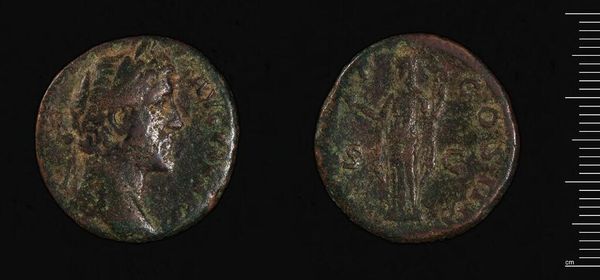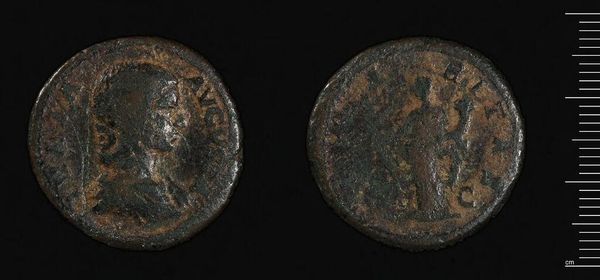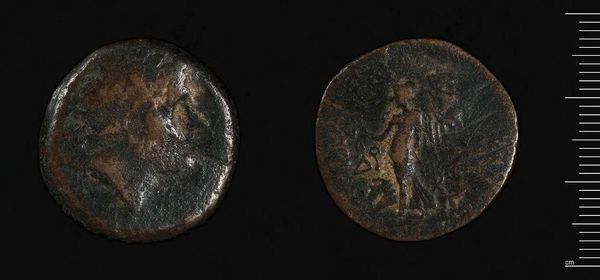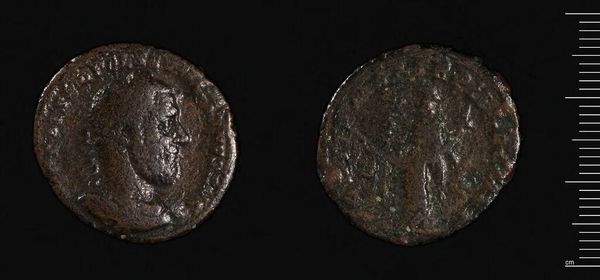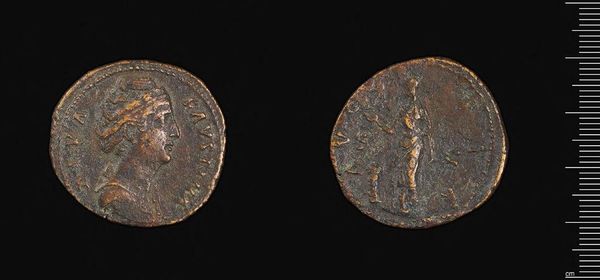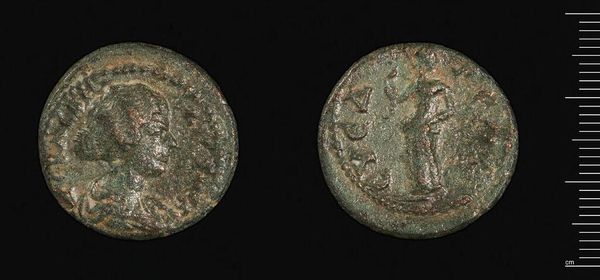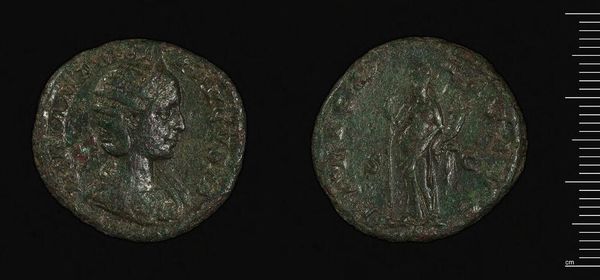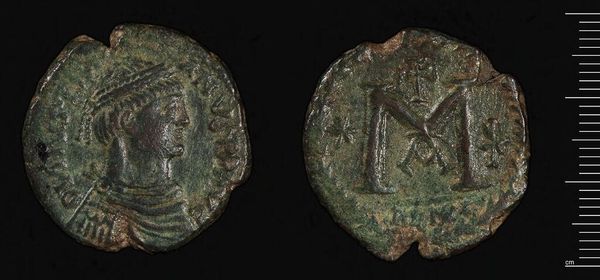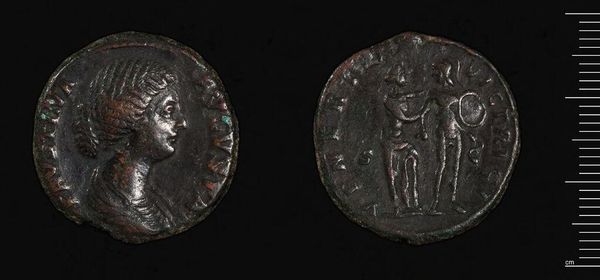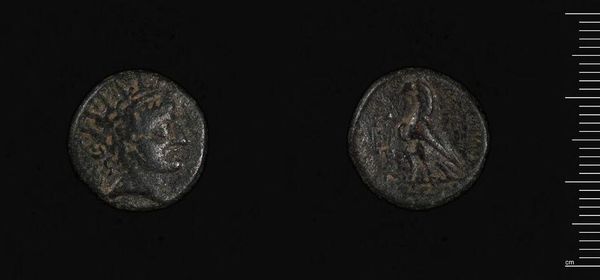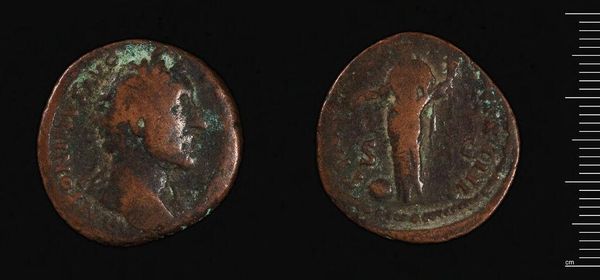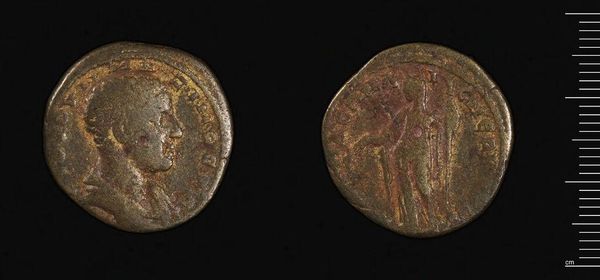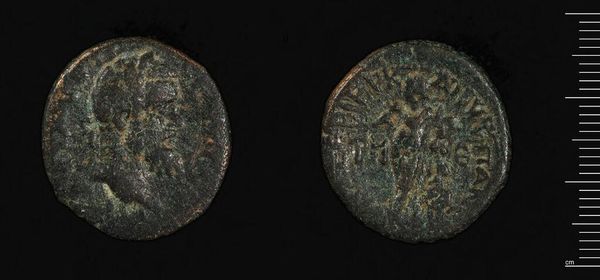
Dimensions: 11.2 g
Copyright: CC0 1.0
Editor: This is a coin of Caesarea ad Libanum under Antoninus Pius, now held at the Harvard Art Museums. It's heavy, about 11 grams. The wear on it makes me wonder about all the hands it's passed through. What can you tell me about its story? Curator: This coin embodies Roman imperial power projected onto a local context. Caesarea ad Libanum, now near modern-day Lebanon, highlights Rome's strategy of co-opting local elites. Do you notice the imagery? Editor: I see what looks like a portrait on one side and figures on the other. Curator: Precisely. The portrait likely represents Antoninus Pius himself, while the figures on the reverse probably depict local deities or symbols. Think about how this iconography asserted Roman authority. The coin literally puts the emperor's face in the hands of the people. Editor: So it’s not just currency, but propaganda? Curator: Exactly. Money was a powerful tool for disseminating ideology and reinforcing hierarchies. Editor: I hadn't considered the power dynamics inherent in something as simple as a coin. Thanks! Curator: It reveals how deeply power is embedded in everyday objects and visual culture.
Comments
No comments
Be the first to comment and join the conversation on the ultimate creative platform.

